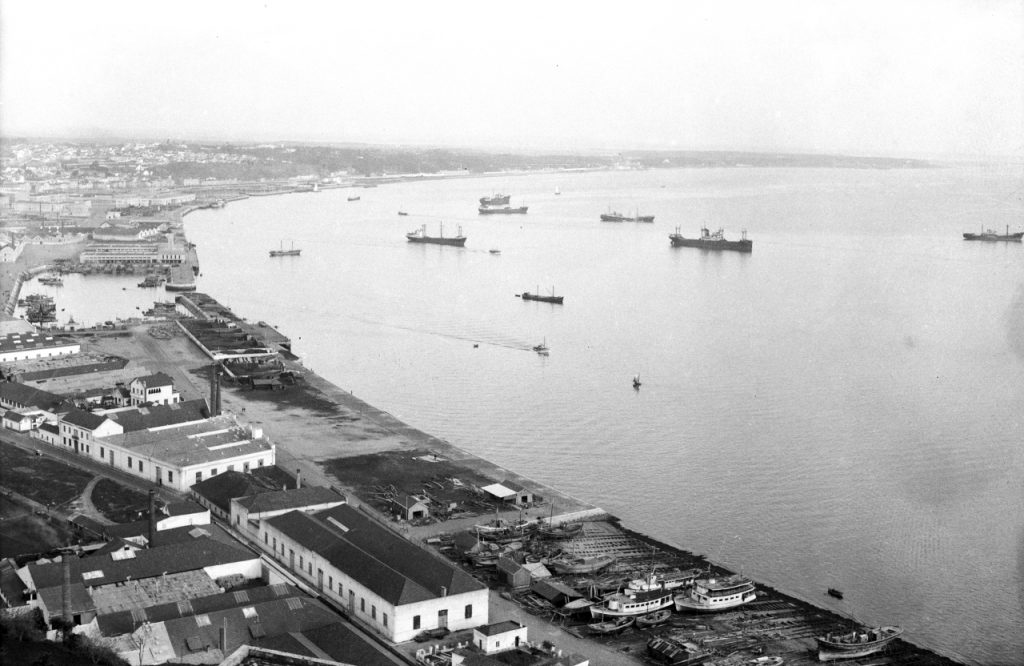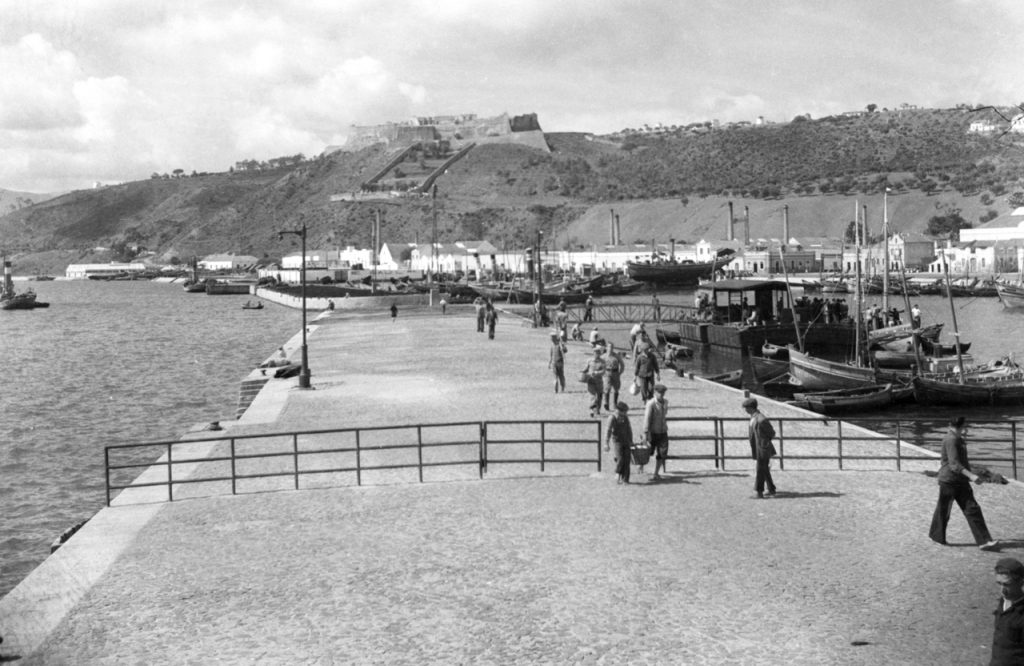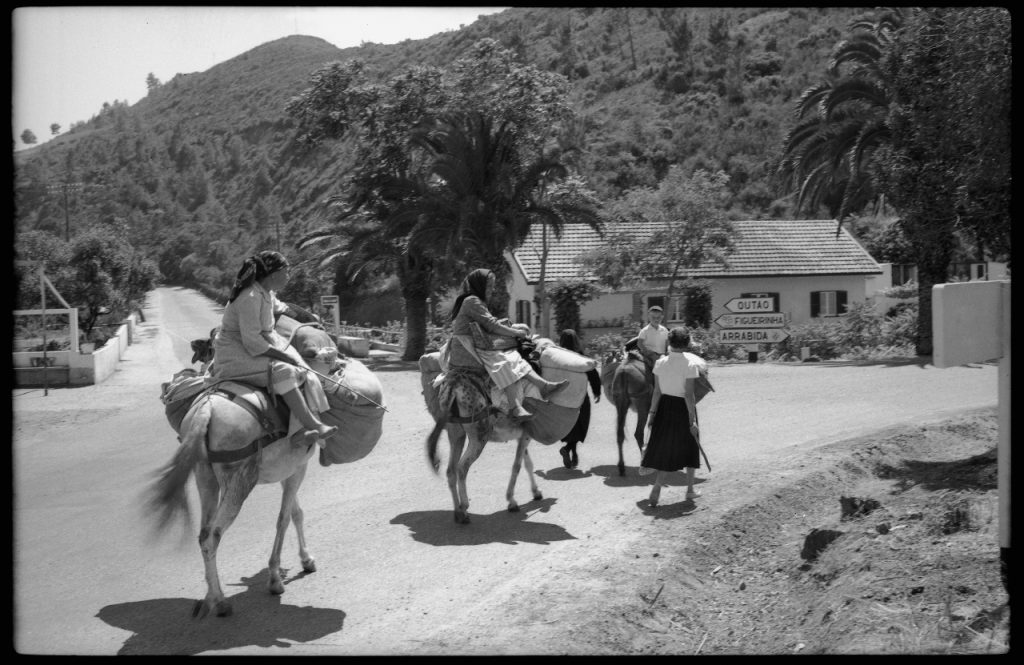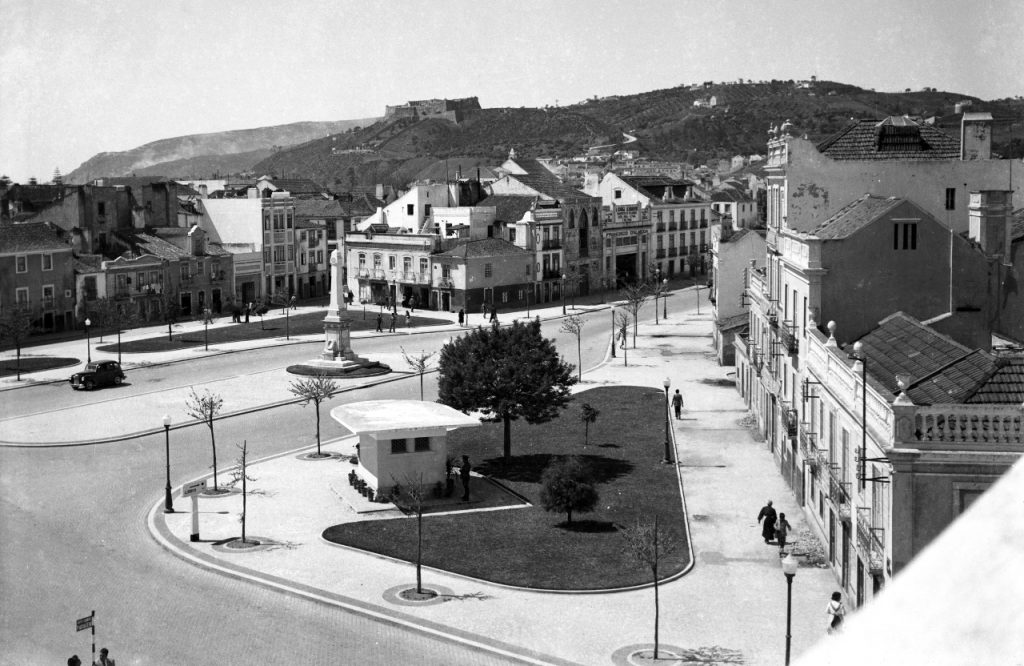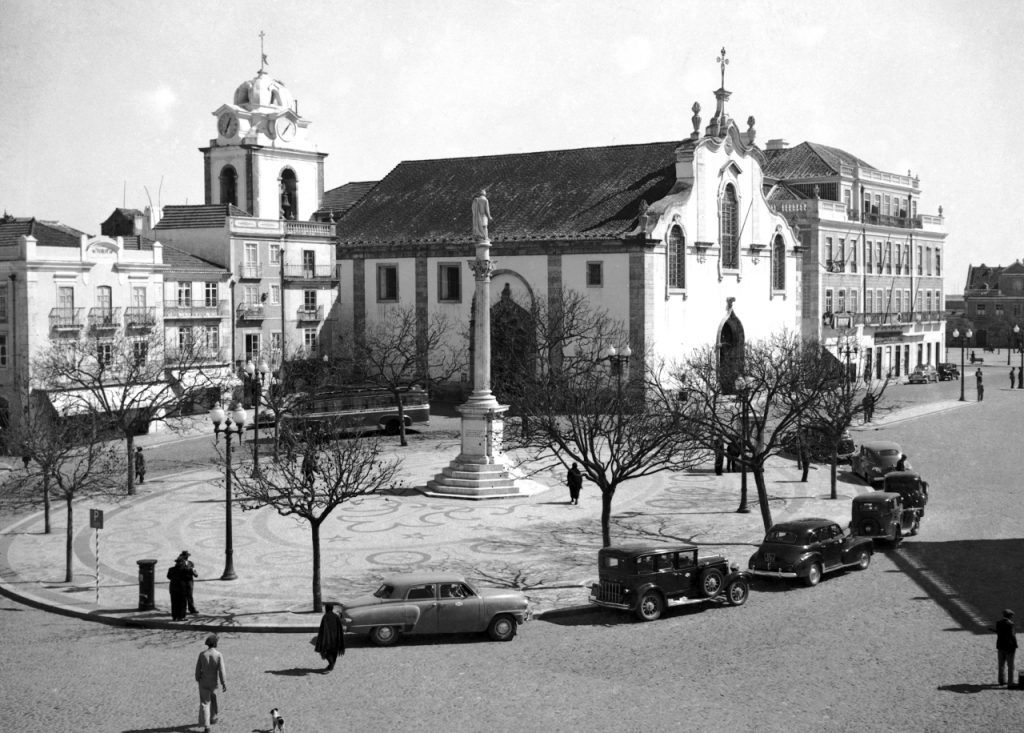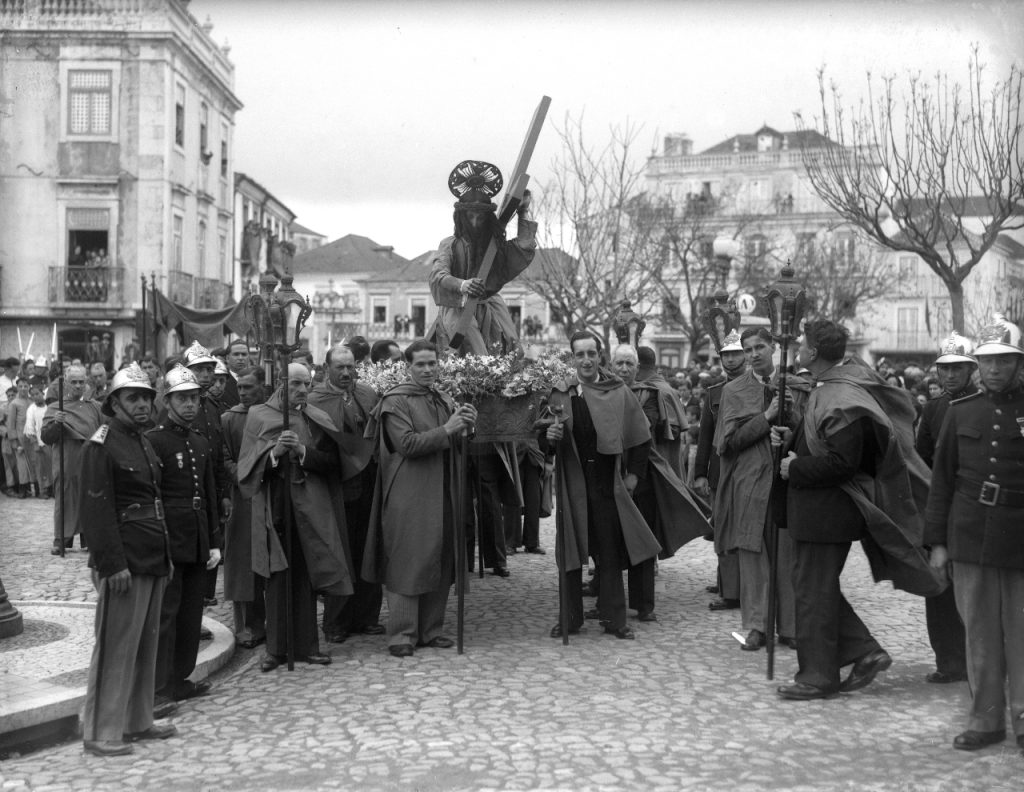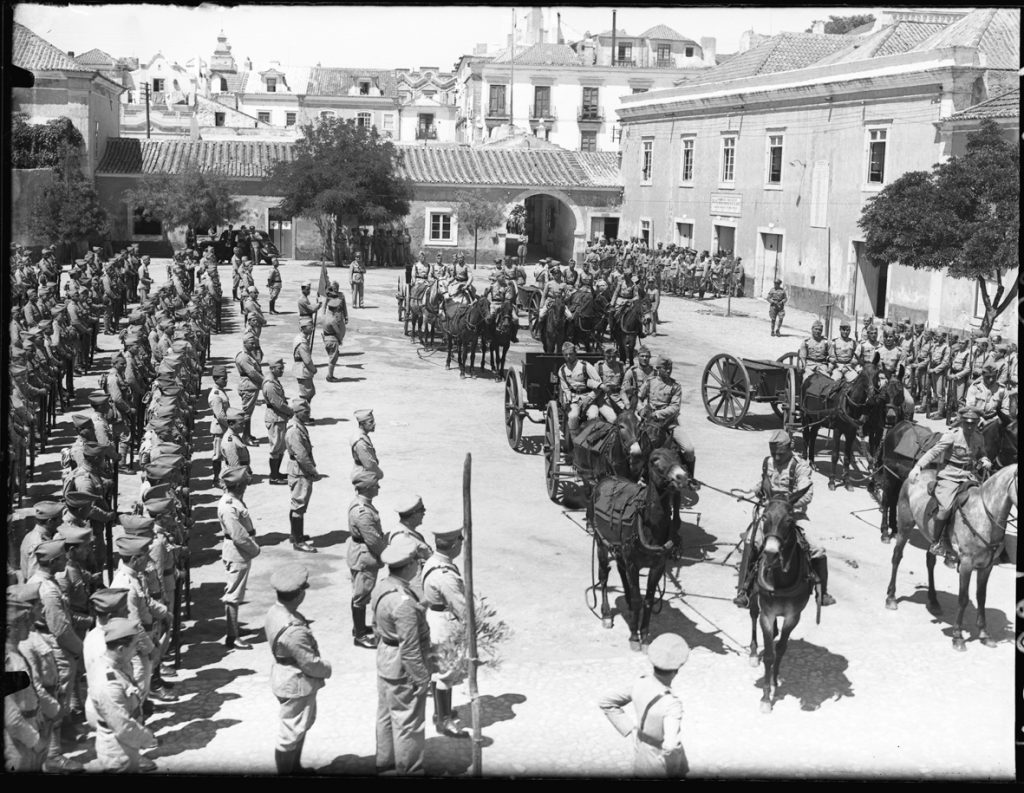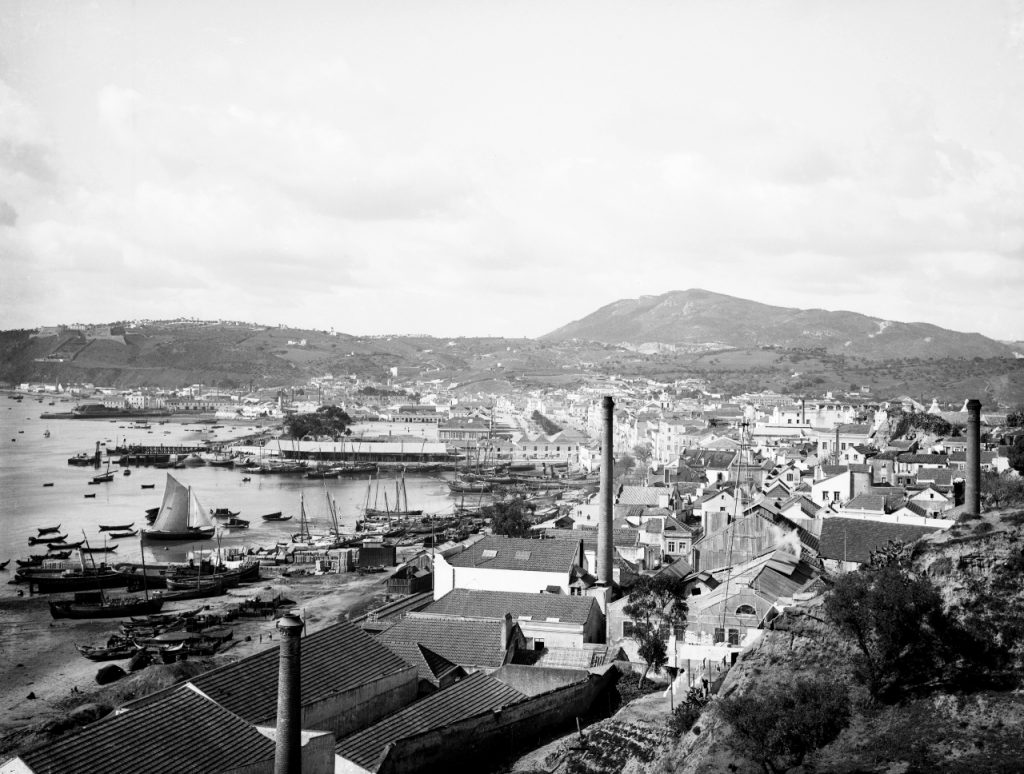Versão portuguesa aqui.
The building of the City Hall of Setúbal, located in Praça do Bocage, was initially built by King João III in 1525, following the elevation of the village to the title of Notable, and was intended to house the City Hall and other administrative bodies.
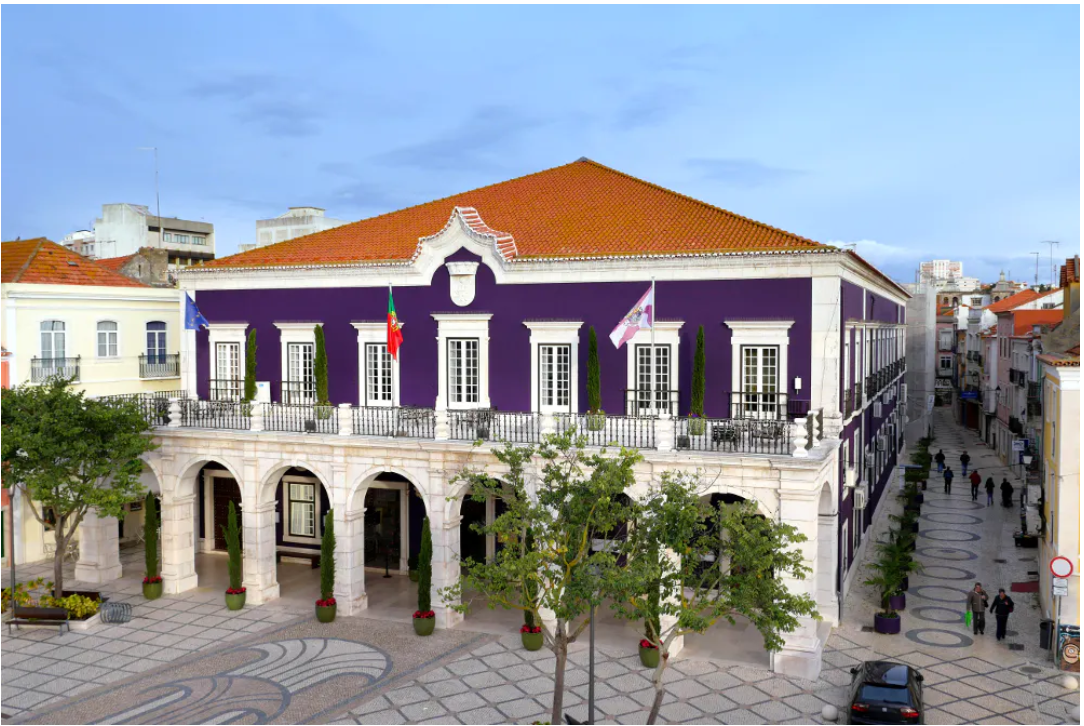
At the time, the square was called Praça do Sapal or Largo das Couves, because the local vegetable market was located there.
In 1526, houses in that square began to be demolished, with the aim of widening it, and the construction of the two-storey building began, with the Paço do Trigo e Açougue, the jail and other houses and compartments on the ground floor, and the House of the Chamber and court hearings and other houses for various offices on the first floor. Construction was delayed due to a violent earthquake in 1531, which affected the entire region of Lisbon and the Tagus valley, and was completed in 1533.
Subsequently, the building did not change until 1722, the year in which, given the advanced state of degradation, the people of Setúbal paid for a renovation, which was completed in 1724. About 10 years later D. João V ordered the construction of a balcony. The 1755 earthquake so damaged the structure of the Town Hall building that it was practically in ruins, so it underwent works, including its expansion, and now also houses the Court, the Reception and the Treasury Department.
At the beginning of the last century, exactly on the night of the 4th to the 5th of October 1910, with the establishment of the Republic and as a result of the popular demonstrations in Setúbal, a fire ruined the entire building and all the documentation and works of art that were in the interior. The headquarters of the municipal services moved to the Liceu Bocage, where it remained until 1938, when the reconstruction works directed by the architect Raul Lino were completed. With these works, the façade now has seven arches (instead of six) on the ground floor, and seven windows (instead of five) on the main floor. In front of the arcades of the Town Hall, the following sentences could be read on the sidewalk: “remembering important facts in the history of Setúbal: Very remarkable town on September 16, 1525; City on August 19, 1860; and District Capital on December 22, 1926”.
Currently, the Session rooms, the Municipality room, inaugurated in 2010, on the occasion of the celebrations of the 150th anniversary of the elevation of Setúbal to the status of city, and the Main Hall, which houses the three panels of the “ Triptych of Illustrious Setubalenses”, painted by another no less illustrious Setubalense, Luciano dos Santos. The set of panels portrays the notable figures of seven centuries of Setúbal history, going back to the Middle Ages, with the Spatharian knights, to artistic figures from other eras, such as João Vaz, Luísa Todi, Bocage, Morgado de Setúbal, Silvestre Serrão or Vasco Mouzinho de Quevedo. In the Tripico Game, you can view the panels and put your knowledge about some of the personalities that appear on them to the test.
Some archival photos by Americo Ribeiro.

